Kevin O’Brien on Bangalore 2011: We were virtually dead and buried, so I said, ‘let’s have a slog’, but England couldn’t stop us and soon I knew we would win
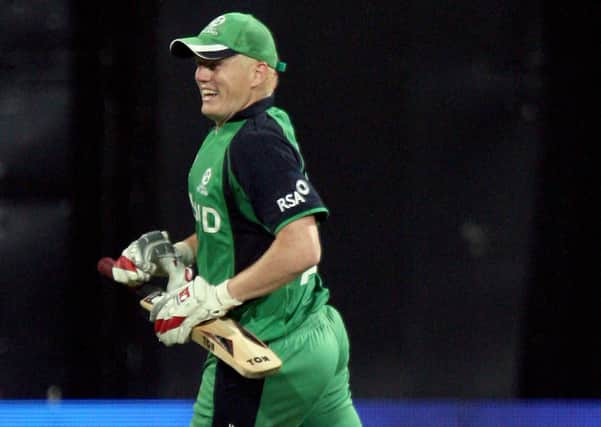

The Irish batsmen were ostensibly chasing 328 to win against England, more than any country had ever chased to win a World Cup match, and by the time O’Brien and Cusack got together it was, to all intents and purposes, a hopeless cause.
Ireland, at that stage still an Associate cricket nation, were not so much on the ropes as flat on their backs on the canvas at 111 for five, having just lost three wickets for eight runs.
Advertisement
Hide AdAdvertisement
Hide AdO’Brien recalls that conversation with Cusack with the clarity you would expect from someone who went on to hammer the highest ever individual score in a World Cup match.
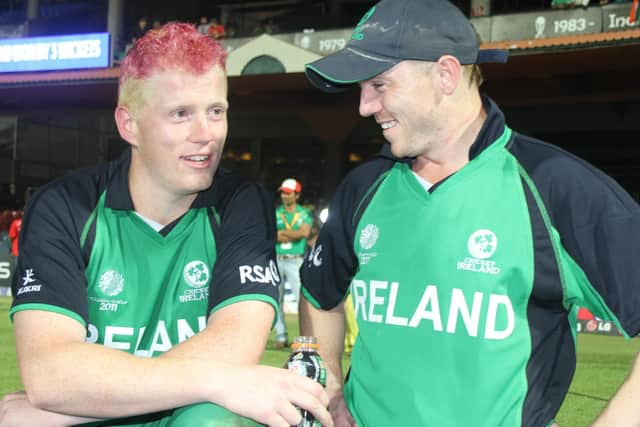

“I remember saying to Cusy, ‘mate we can either tap it around here for 20 overs and get 250 and lose respectably or we can have a crack, and if we get bowled out for 150, we get bowled out. I said to him that I would rather lose badly trying to win than have a respectful loss.”
O’Brien doesn’t try to portray that 162-run partnership as some kind of tactical or technical masterclass. Against an England attack that included all-time Test greats James Anderson, Stuart Broad and Graeme Swann, O’Brien’s feeling was that Ireland were virtually “dead and buried” so he decided to “have a slog”.
It briefly crossed O’Brien’s mind to be more cautious, a humiliating defeat would have shone an unwelcome spotlight on the Associate nations who were struggling to make a fist of that World Cup.
But O’Brien’s attacking instincts won the day.
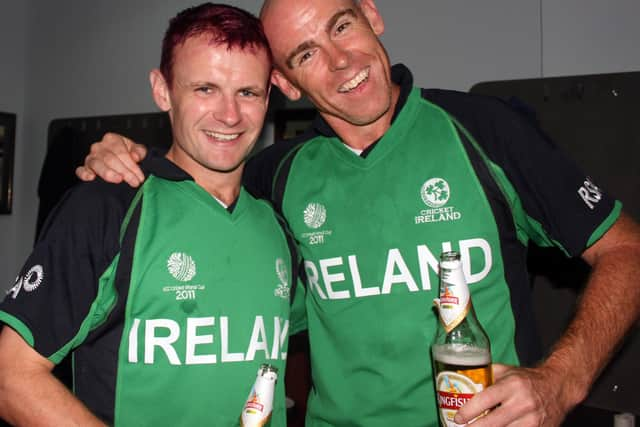

Advertisement
Hide AdAdvertisement
Hide Ad“We took the power-play very early, back then most teams were taking it around the 35th over, but we went earlier,” O’Brien said. “We got 62 off those five overs, and from then the momentum was with us to such an extent that England couldn’t wrestle it back and once we got down to the scenario where we needed 120 off about 17 overs, something like that, I knew we would win if myself or Cusy was there at the end or close to the end.
“We had the momentum and England didn’t have any answers, their bowlers weren’t executing and they weren’t thinking clearly and they were basically playing into our hands.”
A matter of minutes before, O’Brien’s fitness to even bat could have been in doubt. His brother Niall, when reflecting on the drama of Bangalore, recalled that Kevin was in a bad mood in the field. Kevin recalls making several fielding errors and then jarring his right knee in a vain attempt to stop the ball in the outfield as England appeared to be marching towards what surely would have been an insurmountable 350.
“I remember I didn’t have a great day in the field, I misfielded quite a few and what not, and then I injured my knee, I went stop the ball and I jarred my knee, I hyper-extended it. I thought I had done something really serious, but thankfully it was ok, and I fielded the rest of the innings,” he said.
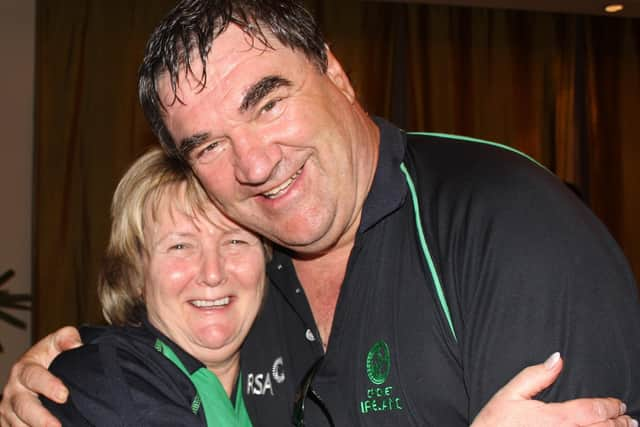

Advertisement
Hide AdAdvertisement
Hide AdO’Brien heroics will ultimately be what people remember most about the day, but the all-rounder emphasises the role of Ireland’s bowlers in a late-order England slump that gave the Irish a glimmer of hope.
“The last 10 overs with the ball, we were unbelievable, especially John Boy (John Mooney) and TJ (Trent Johnston). I can’t remember the exact figures, we restricted England to 50 odd for five off the last 10 overs, England probably should have got about 360 if I’m being honest. They were probably 270 for two or something off 40 overs, they should have got well above 350.
“Nowadays, with the way cricket has gone, they would have got over 400, just the way that batters are these days, teams bat so deep, people can hit sixes when they want, as a result of so much T20 being played. But we bowled very well, we fielded very well in those last 10 overs and we kept them to a score that was probably about par and certainly below par from where they should have been from the first 40 overs.
“From that point we were positive, we had seen the wicket was very good, the ground was very small, when you hit the ball it went further at altitude and that kind of thing.
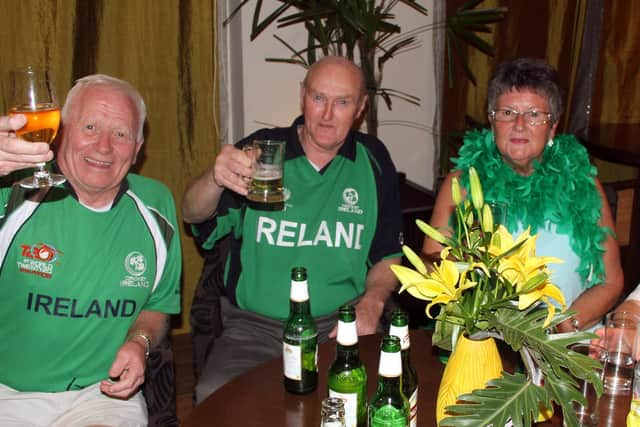

Advertisement
Hide AdAdvertisement
Hide Ad“We had a chance for sure in the chase but it didn’t help that we lost Porty (William Porterfield) from the first ball of our run chase, but Stirlo (Paul Stirling) and Joycey (Ed Joyce) played well to take a bit of the momentum back. Obviously Swann came on and bowled well, and the middle period we lost a few wickets.”
O’Brien, with his hair dyed bright pink in honour of a cancer charity, was utterly fearless in his hitting, his first 50 coming off just 30 balls. Swann, at that stage probably the world’s finest off-spinner, was deposited twice over the deep mid-wicket boundary while Anderson was struck with disdain over long-on.
When the Dubliner eventually reached three figures, holding his bat aloft into the night sky and with a smile as wide as the River Liffey, it was in the small matter of just 50 balls, by some distance the fastest ever World Cup century.
O’Brien was aware of the formidable reputation of the attack he was facing, but he went on targeting almost every ball.
Advertisement
Hide AdAdvertisement
Hide Ad“They were, obviously two of them are still are, (Anderson and Broad), two of the best bowlers in the world, obviously that’s in Test cricket. It was a very good attack, and probably one of England’s best spinners of all time. They had an unbelievable attack and to chase it down was a great achievement for us, and something was before the tournament, we had not thought anything about it.”
In truth, the outcome, as O’Brien admitted, looked inevitable from a long way out. O’Brien eventually departed, run out after striking 11 fours and three sixes, with 11 runs still required, but Mooney and Johnson ensured there were no last-minute alarms with the formalities, and they were formalities, complete with five balls to spare, The celebrations ran deep into the night, although the excruciating pain in O’Brien’s knee meant he was in the physio’s room by 6.30am the next morning.
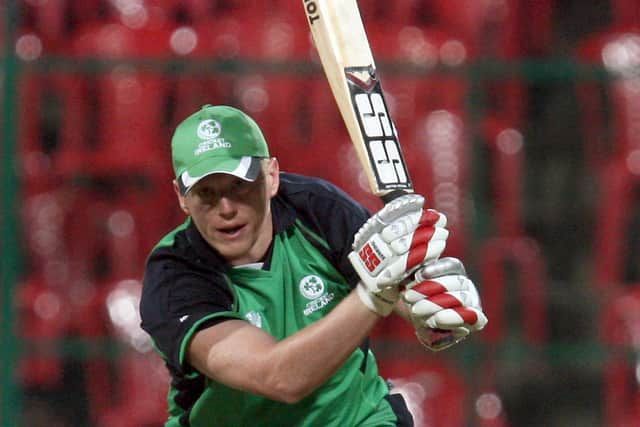

Rarely can have one cricketer’s life have changed so dramatically overnight, at least not an Irish cricketer. In cricket-mad India, O’Brien became instantly recognisable, his name was also on the lips of cricket lovers everywhere.
In the burgeoning world of T20 he was suddenly in demand, playing over the course of the next five summers in limited overs cricket in England, and featuring around the world in the likes of New Zealand and Caribbean T20 competitions, among others.
Advertisement
Hide AdAdvertisement
Hide AdO’Brien has played some wonderful innings since that balmy evening in southern India, but by 2018 it didn’t look as if anything could surpass it.
By now in his mid-thirties, some critics wondered if his best days had gone. But then came a sting in the tail, a performance in Ireland’s inaugural home Test match against Pakistan at Malahide that, in many respects, deserves to be ranked above the England century.
Ireland had been routed for just 130 in their first innings, and when Pakistan declared at 310 for nine in their reply, and Ireland slumped to 95 for four in their second innings, an innings defeat looked likely.
O’Brien had long been pigeon-holed as a white-ball cricketer, a batsman who clubbed boundaries while not worrying too much about the technical complexities associated with longer form of the game. But in the space of almost six hours he played an innings that deserves to rank alongside Bangalore in the annals of Irish cricket history.
Advertisement
Hide AdAdvertisement
Hide AdCurbing his natural attacking instincts while facing 212 balls, many of which he played defensively to, he made 118, Ireland’s first Test match century. By leading Ireland to 339, he gave them hope of a victory to rank alongside Bangalore, but even if that wasn’t ultimately to be as Pakistan recovered from a second-innings wobble, O’Brien’s innings is no less significant because it was played in a defeat.
As someone who openly prioritised white-ball cricket, initially O’Brien perhaps didn’t grasp the significance of what he had done.
“To be honest with you, before I got the Test hundred, if you had asked me that, I would have said that Bangalore would always have been number one. But I think the more it has gone on, being a Test centurion is pretty special,” he said. “Historically I have said in the past that red ball cricket wouldn’t be my favourite format, but to have a hundred in my name in Test cricket is pretty cool. Not many people can say they have done that and to be the first Test centurion for Ireland is also pretty cool.
“I think at the moment Bangalore just shades it but perhaps if you ask me in five or ten years’ time, being the first Test centurion might just eclipse it. The challenge Test cricket poses to players, technically, mentally, physically, tactically, it challenges every aspect of a batsman.”
Advertisement
Hide AdAdvertisement
Hide AdWith the 10-year anniversary of Bangalore on Tuesday, O’Brien is holding a free question and answer session with the public on the online video conferencing tool, Zoom between 7-9pm on Tuesday, March 2. You can sign up to the session here.
He hopes the session will provide a lift for those in lockdown and whet the appetite ahead of the cricket season, which now looks likely to start in the spring.
“It’s not so much for me to publicise 10 years since the England game, it’s more so to give people something to look forward to and to let people that I’m looking to increase my coaching this summer and if people want to get involved and want a session or two with me, it’s an option.”
O’Brien aims to strength his coaching academy this summer and make up for last summer when restrictions saw many children miss out on cricket altogether.
Advertisement
Hide AdAdvertisement
Hide AdAs O’Brien emphasises, cricket is a technical game and children can ill afford another summer away from the game.
“Bowling is very technical at the best of times, as is batting, and for kids not to pick up a cricket bat for 12 months and to get where you were a couple of seasons ago, is going to be difficult.
“Kids need that bit of structure and training and they also need that bit of competition.
Every kid wants to play matches, and every kid wants to win, there’s nothing wrong with that.
Advertisement
Hide AdAdvertisement
Hide Ad“Every kid needs to get back to competitive games. The sooner we can do that for cricket the better.”
A message from the Editor:
Thank you for reading this story on our website. While I have your attention, I also have an important request to make of you.
With the coronavirus lockdown having a major impact on many of our advertisers — and consequently the revenue we receive — we are more reliant than ever on you taking out a digital subscription.
Subscribe to newsletter.co.uk and enjoy unlimited access to the best Northern Ireland and UK news and information online and on our app. With a digital subscription, you can read more than 5 articles, see fewer ads, enjoy faster load times, and get access to exclusive newsletters and content. Visit https://www.newsletter.co.uk/subscriptions now to sign up.
Advertisement
Hide AdAdvertisement
Hide AdOur journalism costs money and we rely on advertising, print and digital revenues to help to support them. By supporting us, we are able to support you in providing trusted, fact-checked content for this website.
Alistair Bushe
Editor